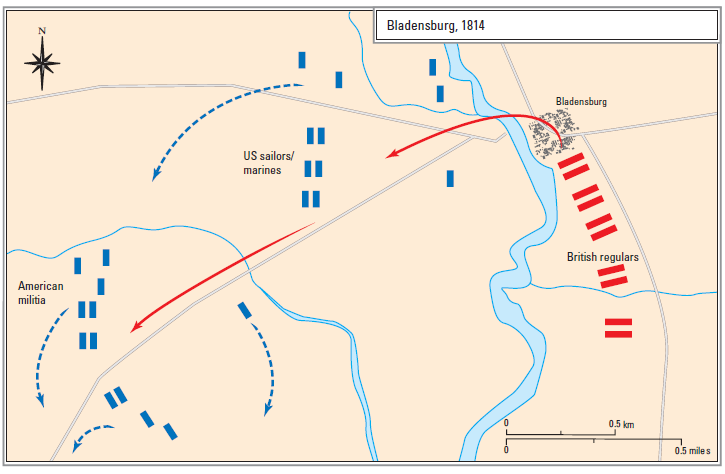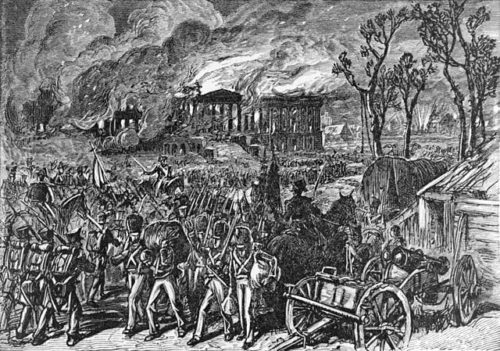Editor: Michael Spilling and Consultant Editor: Chris McNab
American Battles and Campaigns – Battle of Bladensburg, August 24, 1814
After Napoleon’s exile, Britain directed considerable resources into the ongoing war in North America. Around 2500 of Wellington’s regulars joined a force of 20 warships in an attack up the Chesapeake Bay directly into the central United States. The American defenses included a flotilla of gunboats and a few forts, the one at Mount Vernon being blown up by its own garrison when the British approached. Admirals Alexander Cochrane and George Cockburn sought profitable looting of Virginia tobacco, the crushing of Maryland privateering and the destruction of the US capital at Washington. American resistance varied from the heroic to the wildly incompetent, perfectly exemplified at this battle, when 4000 regulars marched through Maryland towards Washington.

US Gen William Winder had 6000 green militia deployed at this town before the British advance, his positions changed at the last minute by Secretary (later President) of State James Monroe while President James Madison and most of his cabinet looked on.

Only 400 of US Commander Joshua Barney’s sailors and marines manning five navy cannon stood firm as the British approached up the pike, British Gen Robert Ross’s Congreve rocket batteries scattering some militia, Winder ordering the remainder to retreat before they had engaged, while Madison and his cabinet escaped into the Maryland countryside. The British engulfed the sailors and marines, capturing the wounded Barney. About the only success in what later was known as the ‘Bladensburg Races’ was a day’s time gained by the battle. The delay allowed First Lady Dolly Madison to evacuate some of the more important art and artifacts from the capital, which the British entered the following day and burned in a notorious action, ostensibly in retaliation for the burning of York and its parliamentary buildings in 1813.
Read more about when Britain burned the White House here
British Admiral George Cockburn planned and led this destructive and infamous raid on the US capital. The British regular soldiers under the command of Gen Richard Ross were methodical in their destruction, firing, among other structures, the Library of Congress, the executive mansion, the US Capitol, a ropewalk and the docks; the Washington Navy Yard was burned by the Americans. A providential rainstorm extinguished the fires the day the British withdrew.
Dr. Chris McNab is the editor of AMERICAN BATTLES & CAMPAIGNS: A Chronicle, from 1622-Present and is an experienced specialist in wilderness and urban survival techniques. He has published over 20 books including: How to Survive Anything, Anywhere — an encyclopedia of military and civilian survival techniques for all environments — Special Forces Endurance Techniques, First Aid Survival Manual, and The Handbook of Urban Survival. In his home country of Wales, UK, Chris provides instruction on wilderness hunting techniques and he is also an experienced martial arts instructor.
